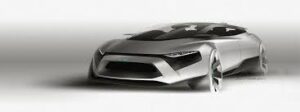Seat belts are an essential safety feature in any car, ensuring the protection of passengers during a collision or sudden stops. However, they are often overlooked when it comes to regular cleaning and maintenance.
Keeping your clean seat belts in a car is not only crucial for hygiene but also for maintaining their functionality and longevity. In this article, we will explore the importance of maintaining cleanliness in your car, the significance of cleaning seat belts regularly, and provide you with seven effective ways to clean car seat belts.
Table of Contents
ToggleImportance of Maintaining Cleanliness in the Car
A clean car not only looks aesthetically pleasing but also contributes to a healthier and more comfortable driving experience. Regular cleaning helps remove dirt, dust, allergens, and bacteria that can accumulate in various areas of the vehicle, including the car seat belts.
Ignoring the cleanliness of your car can lead to unpleasant odors, potential health hazards, and the deterioration of certain components, such as the seat belts.
Importance of Cleaning Seat Belts Regularly
Cleaning seat belts regularly is of utmost importance. Car seat belts are constantly exposed to dirt, sweat, spills, and other substances that can accumulate over time.
Neglecting to clean car seat belts can lead to the accumulation of bacteria and odors, compromising the overall cleanliness and freshness of your car’s interior.
Additionally, dirty seat belts may become stiff and less effective in restraining passengers during a collision.
7 Ways to Clean Seat Belts in a Car
Cleaning seat belts in a car is crucial for maintaining their cleanliness and functionality. Here are seven effective methods to keep your car seat belts in top condition:
1. Gentle Soap and Water Method:
- Create a mixture of mild detergent and warm water.
- Dip a clean cloth or sponge into the soapy solution.
- Gently scrub the seat belts, focusing on stains or soiled areas.
- Rinse the seat belts thoroughly with clean water.
- Use a dry cloth to blot away excess moisture.
The gentle soap and water method is a simple yet effective way to clean seat belts. The mild detergent helps remove dirt and stains without causing damage to the seat belts.
2. Vinegar and Water Solution:
- Mix equal parts white vinegar and water in a spray bottle.
- Dampen a clean cloth with the vinegar and water solution.
- Wipe the seat belts, focusing on stains or dirt.
- Let the solution sit on stubborn stains for a few minutes.
- Continue wiping the seat belts to ensure thorough coverage.
- Use a separate clean cloth dampened with plain water to remove vinegar residue.
Using a vinegar and water solution is a natural and effective method for cleaning seat belts. The vinegar acts as a disinfectant, eliminating bacteria and odors from the seat belts.
3. Baking Soda Paste:
- Mix baking soda with a small amount of water to form a paste.
- Apply the paste to stained areas of the seat belts.
- Gently scrub using a soft brush or cloth.
- Let the paste sit for a few minutes to penetrate the stains.
- Wipe away the paste with a damp cloth.
- Rinse the seat belts thoroughly and allow them to air dry.
A baking soda paste is useful for tackling tougher stains and odors on seat belts. The baking soda helps absorb odors and lift stains, leaving the seat belts clean and fresh.
4. Upholstery Cleaner:
- Follow the instructions on an upholstery cleaner designed for fabric surfaces.
- Apply the cleaner to the seat belts.
- Gently scrub the seat belts using a clean cloth or sponge.
- Rinse the seat belts thoroughly with clean water.
- Allow the seat belts to air dry completely before retracting them.
Using an upholstery cleaner specifically formulated for fabric surfaces provides a deeper clean for seat belts, effectively removing stubborn stains and dirt.
5. Seat Belt Covers:
- Check the manufacturer’s instructions for cleaning the seat belt covers.
- Remove the covers from the seat belts, if possible.
- Hand-wash fabric covers with mild detergent and warm water, or machine-wash on a gentle cycle.
- Allow the covers to air dry completely before reattaching them to the seat belts.
If your car seat belts have removable covers, it’s important to clean them separately according to the manufacturer’s instructions. This ensures a thorough clean for both the seat belts and the covers.
6. Cleaning Seat Belt Buckles and Hardware:
- Use a small brush, such as a toothbrush, to remove dirt and debris from the buckles.
- If necessary, use a mild cleaning solution or rubbing alcohol to sanitize and remove stubborn stains.
- Ensure the buckles are completely dry before reassembling them.
In addition to cleaning the seat belt straps, it’s important to pay attention to the buckles and hardware. Regular maintenance of these components ensures their proper functioning.
7. Prevention and Maintenance:
- Address spills and stains immediately by blotting them with a clean cloth.
- Regularly inspect the seat belts for any signs of damage, wear, or fraying.
- Practice preventive maintenance and promptly address any issues to prolong the lifespan and cleanliness of the seat belts.
Prevention and maintenance play a crucial role in keeping seat belts clean. By addressing spills and stains promptly and regularly inspecting the seat belts, you can prevent dirt buildup and ensure their longevity.
What kind of fabric cleaner is safe for car seat belts?
It is recommended to use a mild upholstery cleaner or a fabric cleaner specifically designed for car interiors. Make sure to follow the instructions on the product and test it on a small, inconspicuous area of the seat belt first to ensure compatibility.
How often should car seat belts be cleaned?
Car seat belts should be cleaned regularly, ideally every three to six months or as needed. However, if there are spills, stains, or noticeable dirt accumulation, it’s best to clean them promptly to prevent any potential damage or odors.
Can car seat belts be washed in a washing machine?
It is generally not recommended to wash car seat belts in a washing machine. The washing machine can subject the seat belts to excessive agitation and cause damage. Instead, it is best to clean them by hand using appropriate cleaning methods such as gentle soap and water or specialized fabric cleaners.
Remember, it’s important to refer to the manufacturer’s instructions and guidelines specific to your car seat belts for the most accurate and safe cleaning recommendations.
Conclusion
In conclusion, these seven effective methods provide a range of options for cleaning seat belts in a car. From gentle soap and water to specialized cleaning solutions, each method offers a unique approach to maintaining the cleanliness and functionality of seat belts. By incorporating these cleaning techniques into your regular car maintenance routine, you can enjoy clean, fresh, and safe seat belts for a comfortable driving experience.
























